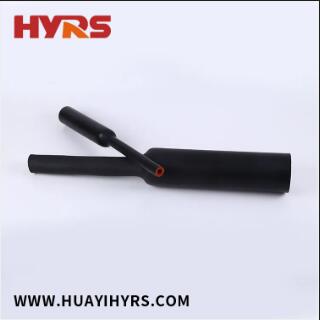Understanding Heat Shrinkable Compound Tubes: What They Are and How They Work
2024-08-24
In the world of electrical insulation and protection, heat shrinkable compound tubes are essential components. These versatile tubes are used in a variety of applications, from safeguarding electrical connections to providing environmental sealing. But what exactly is a heat shrinkable compound tube, and how does it work? In this blog, we'll explore the basics of heat shrinkable compound tubes, including their structure, functionality, and common uses.
What is a Heat Shrinkable Compound Tube?
A heat shrinkable compound tube is a type of tubing made from polymer materials that shrink in diameter when exposed to heat. The "compound" aspect refers to the combination of materials or layers that provide specific properties such as insulation, protection, and sealing. These tubes are widely used in electrical, automotive, telecommunications, and other industries where reliable insulation and protection are required.
How Does a Heat Shrinkable Compound Tube Work?
The working principle of a heat shrinkable compound tube is straightforward yet highly effective:
1. Manufacturing Process: During manufacturing, the tube is extruded at a larger diameter than its final form. It is then cross-linked through radiation or chemical processes, which gives the tube its memory to return to its original smaller size.
2. Application: The tube is placed over the object that needs insulation or protection, such as a cable splice, terminal, or connector.
3. Heating: When heat is applied—typically using a heat gun or other heating tools—the tube begins to shrink. The polymer molecules return to their pre-expanded state, causing the tube to tightly conform to the shape of the object underneath.
4. Sealing and Protection: As the tube shrinks, it creates a tight seal around the object, providing mechanical protection, electrical insulation, and resistance to environmental factors like moisture, chemicals, and abrasion.
Key Features and Benefits of Heat Shrinkable Compound Tubes
- Versatility: Heat shrinkable compound tubes come in various sizes, materials, and wall thicknesses, making them suitable for a wide range of applications.
- Insulation: These tubes provide excellent electrical insulation, reducing the risk of short circuits and electrical failures.
- Environmental Protection: Heat shrinkable tubes offer protection against environmental hazards such as water, dust, chemicals, and UV radiation.
- Mechanical Protection: The tubes add a layer of mechanical protection to wires and cables, preventing wear and tear from friction, bending, or impact.
- Ease of Use: The application process is simple and can be done with basic heating tools, making it accessible for both professionals and DIY enthusiasts.
Common Applications
- Electrical Insulation: Heat shrinkable compound tubes are commonly used to insulate electrical connections, splices, and terminals, ensuring safety and reliability.
- Cable Protection: In automotive and industrial settings, these tubes protect cables from abrasion, chemicals, and environmental exposure.
- Strain Relief: The tubes provide strain relief at connector points, preventing wires from breaking or disconnecting due to movement or stress.
- Environmental Sealing: They are used in outdoor applications where moisture, dust, and other environmental factors could damage electrical components.
Conclusion
Heat shrinkable compound tubes are indispensable in many industries, offering a reliable solution for insulation, protection, and sealing. Their ability to shrink tightly around objects when heated makes them a versatile and practical choice for a wide range of applications. Understanding how these tubes work and their key benefits can help you choose the right type for your specific needs, ensuring that your electrical and mechanical systems remain safe, protected, and efficient.



